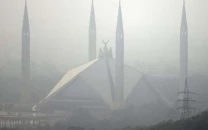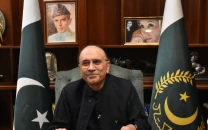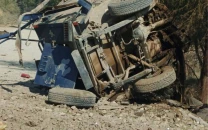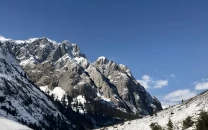The surge cometh — again
The battle to save the country from drowning is infinitely more important than the battle of egos in Islamabad.

The surge cometh — again
The 2010 monsoon was exceptional in that it occurred further north than was usual and hit areas that normally had relatively low levels of rainfall even in the worst of their monsoon season. Meteorologists have noted a gradual change in our weather systems over the decades, with the monsoon shifting northeast and away from the Punjab watershed where it has historically been located. The mountainous north with its narrow valleys and equally narrow and fast river systems channels the deluge southwards, a deluge that has added weight and volume as higher temperatures in the mountains had led to higher rates of glacial and snow melts annually. The period of the fastest melt occurs at the time the monsoon hits the area, an unhappy confluence.
There are still people in Sindh and Balochistan that are displaced or homeless as a result of the floods in 2010 and 2011. The years since have seen accusations of corruption surrounding the provision of relief and rehabilitation, and of the politicisation of aid to the most needy. As the flood works its way south as it inevitably will they will be hit again, and communities and cities that had previously escaped may find themselves at risk. Massive flooding is going to present what comes close to being an existential threat to Pakistan such is the damage it inflicts with increasing regularity. Questions have to be asked about the viability of some communities given their propensity for flooding, and relocation may be a grim last option.
About 200 people have died thus far, though the figure is disputed — as was the toll from the 2010 floods which was officially pegged at 1,800 — and it may be higher. Most of the deaths have been in Punjab and Azad Jammu and Kashmir, and Indian Prime Minister Modi, on September 7, went and saw for himself the devastation wrought in his own country as rain and rivers are no respecters of national borders. Civil agencies have been stretched in terms of disaster response, and the army has come to the rescue in innumerable instances. Measures are in place to protect cities such as Multan by breaching dykes and the National Highway at key locations — emergency responses that themselves have long-term damaging effects on both infrastructure and agricultural productivity and standing crops are lost and the flooded land unable to be brought back into productivity for as long as a year. The implications of that in what is in parts a triple-cropping zone are as yet incalculable.
The floods of 2014 are still a ‘work in progress’ and although the rainfall is dying away the land will progressively drain to the south in coming days. Disaster preparedness and timely well-planned relief operations are going to be necessary into the foreseeable future; the flood problem is not going to magically disappear — and the battle to save the country from drowning is infinitely more important than the battle of egos in Islamabad.
Published in The Express Tribune, September 9th, 2014.
Like Opinion & Editorial on Facebook, follow @ETOpEd on Twitter to receive all updates on all our daily pieces.



















COMMENTS
Comments are moderated and generally will be posted if they are on-topic and not abusive.
For more information, please see our Comments FAQ